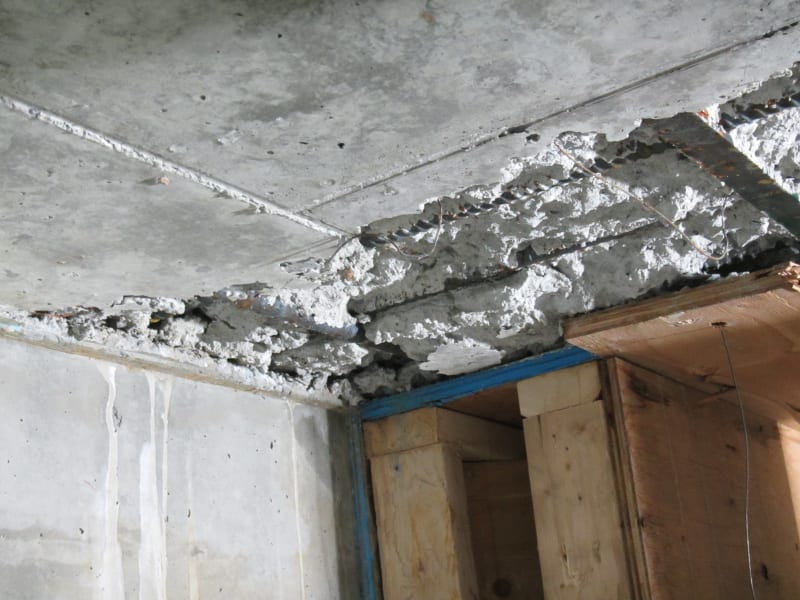A foundation that sinks or cracks is a serious problem for a home. It can lead to structural damage and safety hazards for the people inside.
Fortunately, there are ways to fix it. Some methods are invasive, and breaking through the slab can be expensive. Other solutions offer only a temporary fix. Contact Sugar Land Foundation Repair Solutions for professional help.
Foam jacking is an easy, quick, and cost-effective slab repair method. It involves injecting polyurethane foam under the concrete slab to lift it up and level it. The process is less invasive than mud jacking and can be completed in a fraction of the time. It can also be used to level sunken or uneven driveways, sidewalks, patios, garage floors, basements, and more.
Sunken and uneven concrete slabs can develop due to a variety of reasons. One common cause is soil erosion. When the soil underneath a concrete slab compacts or washes away, it leaves voids that a heavy concrete slab will sink into. This is especially true if the slab is located in an area with constant water flow or runoff.
Over time, the voids in the ground can become bigger and more significant. This is why it is important to monitor the stability of any slab you have on your property. If you notice any signs of a sunken or uneven slab, contact a professional for a slab repair service as soon as possible.
When a slab sinks, it often becomes a trip hazard that can lead to injuries or expensive repairs. Many services promote grinding off the lip of a good slab to “fix” the problem, but this is not a long-term solution. The root of the issue has not been addressed, so the bad section will continue to sink and move, creating a new trip hazard. This cycle will continue until the good and bad sections are at equal heights, which is usually within a year.
Using foam lifting to fix sunken or uneven concrete slabs is an excellent option for commercial and industrial properties as well. Uneven flooring can create safety issues for employees and customers, and it can also affect the way machinery is operated. Foam lifting is a fast, affordable, and permanent solution for uneven flooring that will save you money in the long run and prevent future accidents.
Underpinning
The process of underpinning is the best way to strengthen a foundation that is showing signs of failure. It involves extending the existing foundation of the home or building and spreading the load over a larger area. It also involves enhancing the soil properties that support the structure. This solution is usually reserved for slab-on-ground type foundations that are experiencing issues due to a combination of factors, including soil movement, erosion, or water penetration into the basement.
This method is a long-term repair strategy that is generally considered safer than other alternatives like mudjacking and polyurethane injections. These are short-term solutions that might provide some immediate relief for a sinking foundation but will not solve the root issue. Underpinning is not risky, provided it’s carried out by an experienced professional and a structural engineer weighs in on the design and execution of the project.
In most cases, concrete underpinning will involve pouring new concrete underneath the existing foundation to make it stronger and more stable. This is typically a major project, as it requires the excavation of soil directly under the foundation. This must be done in stages to minimize the risk of undermining the entire foundation of the building or home.
During the underpinning process, a certified inspector will perform tests on the soil to determine the appropriate type and strength of concrete for the underpinning. This information will be used to design the underpinning system and ensure that it is installed correctly.
A variety of underpinning systems are available to reinforce a foundation, including push piers, helical piers, or resistance piers. Push piers are similar to stumps but are designed in such a way that they can be driven into the ground with machinery. Helical piers look like giant corkscrews that are twisted into the ground to reach stable soil. This system is often used in areas where it is impossible or impractical to use a piling rig.
Resistant piers work in the same manner as helical piers, but they are driven into the ground using hydraulic jacks. These piers are also used in areas where it is impossible or impractical for a technician to use a piling rig.
Piers
Piers are essential in construction projects, as they help to support foundations and reduce the risk of damage. They can also be used to repair unstable soil conditions, making them a great solution for many different types of structures. However, if they are not properly installed or maintained, they can become a safety hazard and cause further damage to the structure. In this article, we will discuss some of the most important things to know about piers.
One type of pier is the concrete pier, which consists of concrete cylinders that are pushed into the ground. These piers are a cost-effective option for certain types of soil. The piers are then reinforced with steel to ensure they can support heavy loads. This technique is particularly effective for areas with unstable or expansive soil.
Another popular type of pier is the helical pier, which looks like a large screw and is typically used in residential applications. These piers are easy to install and can be used in conjunction with existing foundations. However, they are not recommended for heavy loads, and they must be carefully positioned to prevent excessive bending of the foundation.
If you are in need of a slab repair, it is important to contact a company that has experience with this type of work. A professional can inspect your home and recommend the best repair method. In addition, they can ensure that the area surrounding your home is properly graded to keep water away from your foundation.
While concrete slabs are a durable material, they can be damaged by natural factors. This can include heavy rains, freeze-thaw cycles, and soil compaction. These factors can weaken the foundation and lead to cracking and sinking. If you notice any signs of damage, it is important to get the repair process started as soon as possible.
The key to a strong slab foundation is a good soil condition and proper installation. It is also important to maintain the foundation and keep it free of debris, which can lead to cracking or settling. To avoid this, you should clean your gutters regularly and direct water away from the foundation.
Stitching
Stitching is a concrete slab repair technique that uses pieces of rebar to stop cracks from re-sizing. It is appropriate for fine surface cracks that are one-time occurrences and will not significantly change the shape of the slab or pavement. It is also a viable alternative to breaking through a slab and re-pouring. Breaking through a slab has significant disadvantages for homeowners; it forces water to be shut off, the noise from saws and jackhammers is deafening and the dust can be dangerously inhalable.
Cracks in a slab are often caused by settlement of the soil under the footers. This is usually the result of improper site preparation when the home was built or erosion. When the ground shifts and settles it exerts enormous pressure on the foundation. Concrete is not flexible; if it is forced to bend or curve it will crack and fail.
Slab jacking can often be used to fix a sinking slab. However, in the case of a sagging foundation, it may not be sufficient. For this reason, piers can be installed in the footers to increase the support of the slab and prevent further settling.
For a complete slab repair solution, rebar stitching might be appropriate. It combines the advantages of the pier method with the simplicity of the foam method. The rebar stitches are precision engineered to restore tensile strength across the crack, reestablish compression and stabilize the structure. These concrete staples are fabricated with a machined face and slot, welded to a high quality A-706 hook and hot dip galvanized. They are available in plate staples, slotted anchors and helical stitch designs.
Many homeowners attempt to solve trip hazards by grinding off the lip of a good slab where a bad area has settled. This only addresses the problem temporarily and can cause other issues. A much better option is to have a professional assess the situation and use a slab repair method that will ensure the stability of the entire foundation. It is a common misconception that insurance will cover the cost of fixing a foundation. However, most insurance companies only deal with sudden catastrophic damage and will not cover gradual deterioration of the foundation over time.


 Site Preparation
Site Preparation